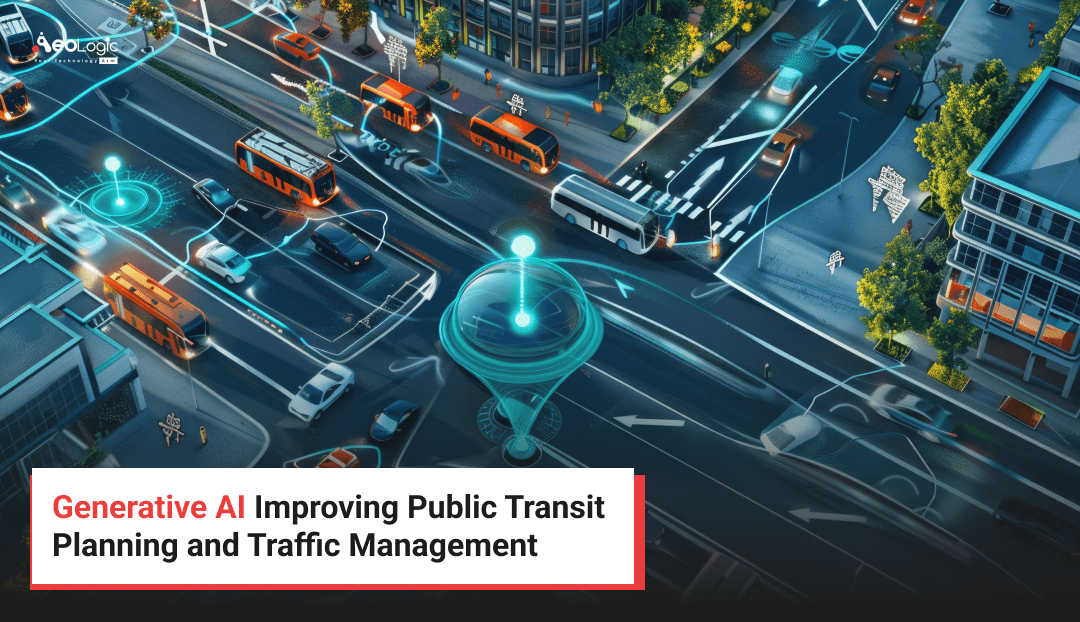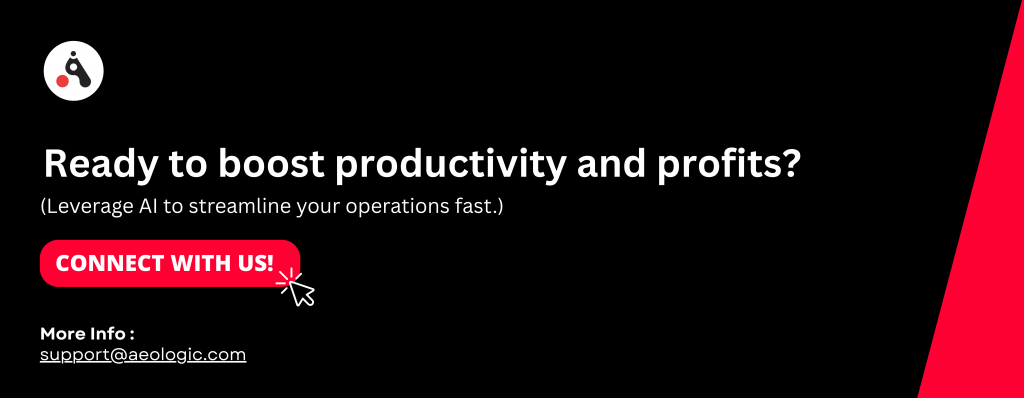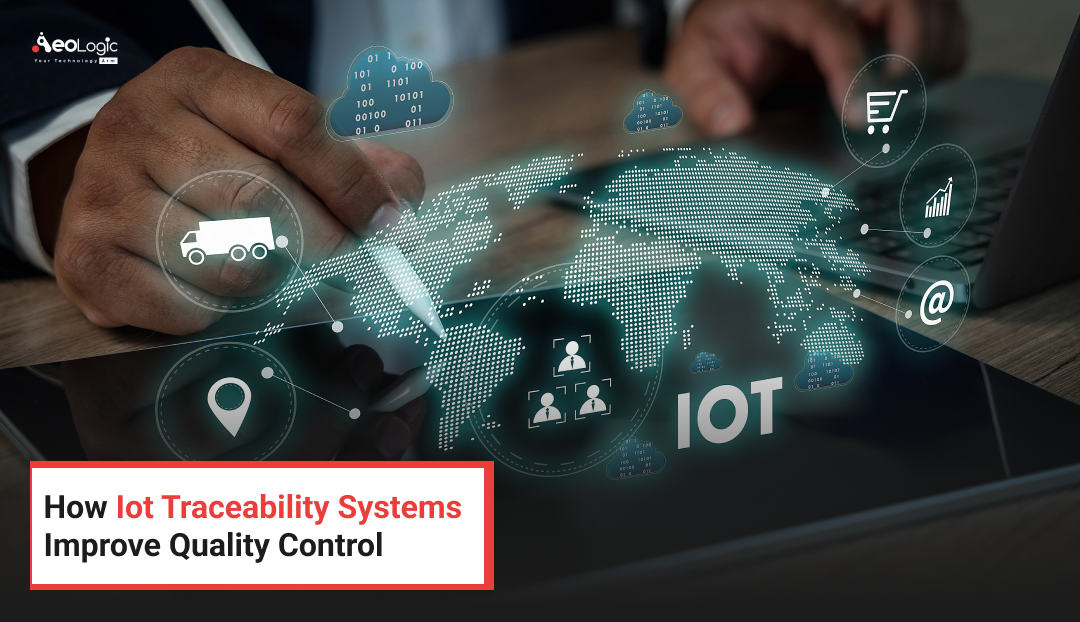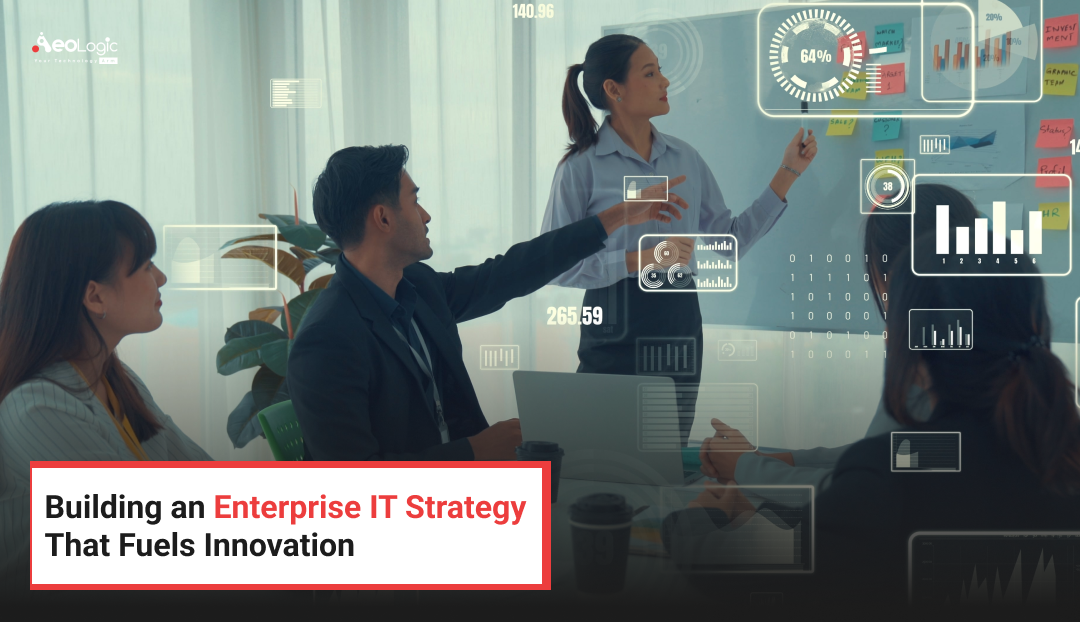The transportation industry has been on the verge of development with the different tools and technologies. The digital transformation revolution including the use of generative AI in traffic management, has had an important impact on enhancing how global transportation networks operate and on smarter ways to manage traffic.
The conventional or manual system of public transit planning and traffic management creates various inefficiencies like congestion, higher harmful emissions, data integration, unstructured route planning, poor optimization and utilization of resources, increased accidents, disputes on traffic, and much more.
These problems should be managed efficiently to make the world a smarter and safer place than ever before. Generative AI development has been revolutionizing public transit planning and traffic management in a much better way.
Overview
Generative AI can create innovative solutions, facilitate data analysis, and predict scenarios to provide the best decisions under suitable conditions, ultimately contributing to the enhancement of public transit planning and traffic management. Generative AI can analyze different route maps to optimize the spread of transportation networks.
By analyzing various data, such as routes, scheduling, and resource availability, it can lead to significantly improved traffic management. This overall enables various benefits such as real-time traffic management, incident detection, and an immediate response system, personalized travel, scenario planning, better transportation communication, and much more.
Also Read: What are the Use Cases of Generative AI in Freight Forwarders
Related Key Statistics
- The generative artificial intelligence (AI) in the transportation market has grown rapidly in recent years. It will grow from $1.01 billion in 2024 to $1.21 billion in 2025 at a compound annual growth rate (CAGR) of 19.6%.
- The generative artificial intelligence (AI) in the transportation market is expected to see rapid growth in the next few years. It will grow to $2.46 billion in 2029 at a compound annual growth rate (CAGR) of 19.5%.
- A survey revealed that 40% of transportation executives plan to adopt AI solutions, while 22% are already integrating the technology.
- Over 50% of transportation companies are already using generative AI for various applications, according to an IDC survey.
- AI-powered systems have shown potential to reduce city traffic congestion by 30% by 2028. AI-driven algorithms in route planning can reduce fleet expenses by 11%.
Related Blog: How Generative AI is Revolutionizing Industries in 2025
What is the Role of Generative AI in Traffic Management?
Let’s first understand what public transit and traffic management refer to. Public transit planning refers to the planning, designing, and managing of public transportation networks in a structured manner. Traffic management refers to managing the movement of vehicles on the routes or roads safely and efficiently.
Generative AI in improving public transit planning and traffic management refers to the solutions inspired or developed by gen AI algorithms to analyze data, routes, resources, and much more to shape the public transit and enable smart, advanced, and enhanced traffic management.
Additionally, generative AI can model scenarios to assess the effects of policies and infrastructure designs, resulting in more sustainable and effective transportation systems. These are all possible with the different and effective applications of gen AI in transportation, such as route optimization systems, smart traffic management, demand forecasting, and data analysis solutions.
According to an IDC survey, over half of transportation organisations are currently utilising generation AI, with knowledge management, marketing (better shipper/lead conversion, greater dynamic pricing/quoting), and product/service creation accounting for more than 70% of use cases.
Overall, generative AI is proving a great solution, not just for transportation infrastructure, but also for global infrastructure development.
Also Read: Importance of Artificial Intelligence in Transportation
What are the Benefits of Generative AI in Traffic Management?
There are various key benefits of generative AI in improving public transit planning and traffic management. Here are a few of them mentioned below.
Predictive Analytics for Traffic Condition Prediction
The prediction of traffic conditions could be a great thing to manage traffic congestion efficiently. But this cannot happen with the same conventional method, as it could provide the data, but cannot enable predictive analytics.
Where the generative AI solutions integration in the traffic management system analyzes the different traffic patterns, timings, conditions, etc, from the daily management. This enables predictive insights about the traffic congestion that enable information about alternate routing, lane monitoring, and much more.
Incident Detection and Response
Sometimes, the incident or accident could result in traffic congestion that produces inconvenience for the citizens and the public. The generative AI-powered solutions can detect the incident and automatically make calls to the emergency services that enabling them to quickly clear the incident area to reduce the congestion. This not only enhances traffic management but also saves lives by taking immediate action.
Optimized Transit Route Planning
The development of route infrastructure and network is very crucial, but it cannot be possible without proper planning and tools.
The conventional transit route system cannot help too much. Where the generative AI integration can simulate various route scenarios, scheduling by analyzing various data like demand patterns, traffic flow, etc, to enable proper planning of the public transit efficiently.
Also Read: Generative AI For Software Development Delivery
Enhances Traffic Efficiency
The conventional traffic management system does not offer any smart system to manage traffic better and advanced. This reduces the traffic efficiency, which is not a great sign for smart city development. Generative AI can enable real-time traffic information, traffic signal control, and congestion estimation. Researchers have demonstrated that using automated traffic systems can result in a 10–20% reduction in travel time.
Reduces Emissions and Fuel Consumption
The bad transit route planning leads to more distance, improper route, bad optimization of route, improper scheduling, etc, which enables more fuel consumption and carbon emissions. This does not affect the route optimization, but also affects the sustainability.
The integration of generative AI for transit route planning and traffic management enables better route scheduling, reduces ideal travel time, improves efficiency, and allocates resources more effectively. This reduces unnecessary fuel consumption and enhances sustainability.
Improves Passenger Experience
Poor transit route planning and traffic congestion hurt passengers’ experiences. The traditional system may improve the situation, but only for a certain period. Where the generative AI can enable better and advanced transit route planning, reduce traffic congestion, enable smart facilities, predictive ability, demand forecasting, and much more that enable passengers to prevent from any type of inconvenience. This overall enhances the passengers’ experience of travelling.
Continuous System Improvement
Continuous upgradation and improvement are very necessary to go with the flow. But the conventional transportation system needs manual upgradation and can be upgraded to a limit that affects the transit route planning and traffic management. The generative AI solutions have machine learning algorithms that enable continuous learning and improvement automatically. The solutions generally analyze the global transportation network and make changes according to the requirements.
Enhances Communication and Collaboration
Communication and collaboration are important factors to enable better planning and execution of public route transit. The conventional system does not provide any advanced communication channel.
Where generative AI can help many stakeholders—such as the public, municipal planners, and transportation agencies—communicate and work together by offering clear and succinct information and suggestions through a smooth, clear, and better communication channel.
Looking for? Generative AI Solutions Provider in India
Real World Examples of Generative AI in Traffic Management
There are various top companies, regions, etc that have implemented generative AI in their transportation networks. Here are a few real-world examples mentioned below.
- INRIX Compass has implemented generative AI to develop a user-friendly interface, analysis of transportation data, and answer the queries of users as soon as possible.
- Alibaba’s AI-powered traffic management system in Hangzhou, China, has been using generative AI to analyze real-time data to reduce traffic congestion, reduce carbon emissions, and decrease travel time in an advanced manner.
- Uber is creating new routing algorithms with generative AI that improve routes for drivers by taking historical data and real-time traffic into account. These algorithms make use of generative AI.
- Singapore’s Land Transport Authority (LTA) has been using generative AI and machine learning algorithms to forecast the route and traffic conditions to provide alternate options and better traffic management.
Also Read: Why Custom AI Solutions Are the Future of Data Analysis and Reporting
What are the Use Cases of Generative AI in Traffic Management and Transportation
Here are few exciting transportation applications to investigate, based on Interchange’s insights and recent breakthroughs in generative AI:
Improved Transportation Routes
The development of efficient transportation routes has been a persistent obstacle for freight forwarding and trucking industry. Generative AI algorithms can analyse trade agreements, tariffs, traffic patterns, data from public transit, and other factors to develop the most efficient routes and reduce costs.
Gen AI models can be implemented by international shipping businesses to determine the most cost-effective delivery method, the most environmentally friendly route, and strategies for reducing carbon emissions.
This is achieved by taking into account variables such as shipment volumes, vessel capacity, and port capacities. DHL, a global logistics provider, is currently utilising generative AI to optimise and modify delivery routes.
Inventory Management in a Dynamic Environment
Inventory management in warehouses can become difficult when inventory control administrators manage tens of thousands of incoming and outgoing units on a daily basis. Gen AI has enabled warehouses to enhance product visibility, prevent stockouts and excess surpluses, and more.
The optimal inventory levels for warehouses are determined by analysing data from various sources, including demand, stock levels, and lead times. The future of Generative AI-driven systems can dynamically arrange warehouse layouts in accordance with the prevalence of products and the anticipated demand for specific items, thereby reducing the need for trips and increasing efficiency.
Gen AI systems are capable of analysing substantial quantities of warehouse management data, such as product locations, transit schedules, and demand trends. Based on this data, generative AI in transportation can generate warehouse configurations that optimise product handling and storage efficiency.
Advanced Driver Assistance Systems (ADAS) and Autonomous Vehicles
AI has the capacity to generate a diverse array of realistic virtual driving scenarios in order to train autonomous vehicles and ADAS systems for even the most unforeseen circumstances. Furthermore, AI has the potential to enhance the decision-making capabilities of autonomous vehicles by developing simulations of various weather patterns and road conditions.
Generative AI can identify the most effective and secure routes for self-driving vehicles by taking into account factors such as traffic, weather, and road closures.
Smart Supplier Contract Management
Suppliers can employ generative AI technology to change contract administration by recording, evaluating, and automating compliance procedures, as well as producing standardised and personalised templates. In addition to warnings for contractual obligations, clause deviations, data privacy commitments, contractual duties concerning data breaches, and other issues, it may automatically construct contract agreements for suppliers and improve overall compliance.
Businesses have already employed Generative AI to develop contract management systems that speed up the contract preparation, review, and negotiation procedures. Using pattern-matching algorithms, it can identify and aggregate various contract types from databases based on their nature and function.
Intelligent Fleet Management Solutions
Large-scale logistics organisations and carriers can effectively use generative AI in transportation to ask questions about their fleet’s performance, idling periods, fuel economy, utilisation, cost savings, and more via a chat interface.
Gen AI systems use natural language processing to identify patterns and trends based on data. Identifying possible problems and areas for development increases fleet performance by making recommendations based on real data.
Also Read: The Benefits of Fleet Management Systems in Logistics
What Challenges Exist When Implementing Generative AI in Traffic Management?
There are tremendous opportunities provided by the implementation of Generative AI in Traffic Management, but there are also serious challenges that municipalities and planners need to bear in mind.
Data Quality and Availability
First, accessing high-quality real-time data is a significant challenge. Generative AI makes forecasts based on large amounts of reliable traffic and transit data, so having only incomplete and older data can lead to bad forecasts and decisions, impacting the reliability of the whole system.
Integration with Existing Infrastructure
Numerous municipalities still have legacy traffic management systems that they may not want to touch or cannot easily connect to contemporary AI applications. Replacement of older legacy systems with generative AI will be complicated and expensive, and if municipalities have to deal with legacy systems in this manner, they will spend considerable funds and time.
Privacy and Security Concerns
Collecting and analyzing traffic data includes sensitive information of vehicle activity and personal travel habits. Custody of this data from breaches and privacy of the users is a vital challenge when deploying an AI-based solution for traffic purposes.
Technical Expertise and Costs
The implementation of generative AI must be operated by personnel who understand the AI technology and the traffic systems. It can be expensive for a municipality to hire and train qualified experts, as well as to procure hardware and software.
Public Acceptance and Trust
Incorporating AI technology into traffic management may generate skepticism and concern over transparency and accountability from the public. Building public trust is key to a successful generative AI project, which entails clear messaging and demonstrating transparent and consistent value.
Also Read: Benefits of Smart Manufacturing with Generative AI Solutions
Final Take
The adoption of generative AI for traffic management has going to boosts in the upcoming future with the different trends and factors like increasing focus on cybersecurity, increasing supply chain management, the rise of smart cities, growth of mobility-as-a-service (MaaS), expansion of autonomous vehicles, and increasing data availability could be the reasons that force authority to implement generative AI.
There are also various trends like advancement in AI algorithms, adoption of smart solutions, advancements in 5G technology, and convergence of AI with the Internet of Things (IoT), development in cloud-based communication technology, etc, that boost the efficiency of gen AI in transportation.
Overall, the transportation industry has to focus on generative AI implementation to not just make better public transit planning and traffic management, but also to boost the smart city development evolution all over the world.
FAQs
How does generative AI handle unexpected events like accidents or road closures?
Generative AI detects disruptions such as accidents or roadblocks quickly via real-time data from sensors, cameras, and traffic reports. It is capable of simulating a variety of scenarios to generate adaptive traffic management plans to reroute vehicles and public transit.
A fast, incremental forecast of the extent of a disruption via AI will minimise or at least reduce congestion and delays. In addition, a fast layout and timely alerts to drivers of vehicles and transit operators improve their responses.
The proactive approach to reducing traffic flow and passenger experience by cities can lessen or even potentially mitigate the effects of unexpected events during operations. This will enhance overall resilience for system pressure points.
Can AI improve accessibility and convenience for public transit users?
AI improves accessibility and convenience through transit information tailored to user needs; for instance, it can help optimize routes for people with disabilities, suggest ideal travel times, and provide real-time information for delays or service changes.
It can even provide voice assistance and multilingual support so a greater number of passengers can easily navigate the transit system. AI also analyzes travel patterns to recommend new stop placements and service frequency, making transit easier.
These improvements will help to ensure that public transportation is more inclusive and convenient for all.
What role does AI play in optimizing routes and schedules for buses and trains?
AI processes an abundance of data related to history and present day variables such as traffic conditions, passenger demand, and weather, and seeks to understand inefficiencies across transit route and schedule. AI also uncovers when people are more likely to use services so that planners can adjust frequency and routing.
This service will help lessen waiting times, reduce crowding, and decrease overall costs. The AI-generated model will be able to run several different scheduling models simultaneously to develop the most efficient solution found to have demand and available services align.
Finally, AI learns from incoming data, and will help keep transit systems responsive to changing variables and flexible to demand.
How secure is the data used by AI in transit planning?
Ensuring data security is a high priority for AI-based transit planning. Cities and service providers adhere to highly-effective protocols, including encryption, anonymization, and secure storage of data to protect sensitive data.
Access controls limit who can view or modify data, and compliance with regulations (e.g., GDPR) helps ensure that person-related privacy rights exist.
If the system is well designed and has effectively aggregated data, it is much more difficult to identify individuals. Ongoing monitoring of systems, combined with periodic security audits, may help recognize and mitigate cyber threats.
Overall, there are many data security challenges, but good procedures, protocols, and regulations are in place, as well as trained personnel that are capable of identifying threats or mishandling of transit data, to help preserve public trust.
How can cities prepare to integrate generative AI into their existing traffic systems?
Cities should invest in establishing data infrastructure that collects and shares real-time traffic and transit information. Working with experts in AI and technology providers like Aeologic makes decisions that are tailored to their own needs
Cities should develop staff capacity who make management decisions and are able to interpret AI outputs. It also need to have data privacy and cyber security policies in place before the programs are initiated. Cities can try pilot programs to test AI solutions on a smaller scale before going to full program mode.
Engaging the public with transparency and education takes time to build trust and gets the public to try AI. Overall, a planned, phased-in approach allows cities to introduce AI solutions for traffic management successfully.

I’m Deepika Pandey, an SEO strategist and content writer with 6+ years of experience. I create SEO-friendly content that drives traffic and engages readers. I combine data insights with creativity to help businesses grow their online presence effectively.







